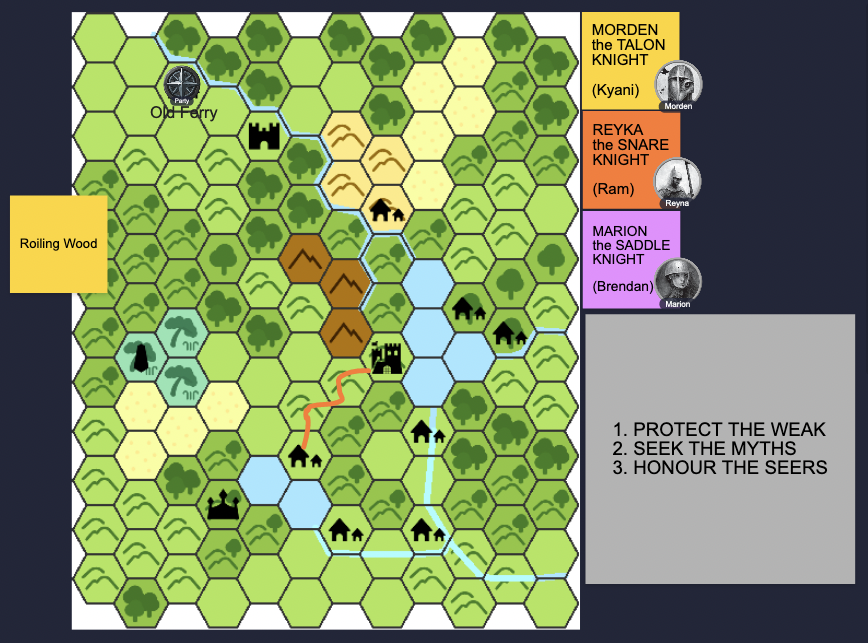GM Screen Renaissance
This is a post about GM screens, but more broadly it’s about ways of building guidance into play artifacts to help players keep track of a game’s concept, assumptions, and play logic. This can be conducive to a smoother play experience and help players grok new systems.
Printing out my DM screen for online Mythic Bastionland felt silly but has actually been a huge help. I always know where info is, it’s in a concrete physical place on my desk, not on another page or in another window. I have trouble with working memory, so having important info physically embedded in the space around me makes a big difference. (This is also why I’ll print out my GM materials even – no, especially – when I run games online.) Recently though, I’ve been thinking about the oft-neglected player side of the GM screen. What can we put there, besides dense reference material and cool art?
My reawakening to the benefits of a good screen came a few weeks ago playing Mothership at Toronto’s BreakOutCon. I don’t what the GM had on their side, but on the player side there was just a printed piece of paper with a few short points of basic advice in big, readable font. I remember one saying something like “running away > head to head combat > doing nothing and avoiding danger.” Since this was a con game, guidance like that is helpful in giving players, who might not know anything about the game hand, something to hold on to and act upon. The GM never even pointed it out, but it was helpful to have it there. Elegant!
This is also what convinced me to paste Mythic Bastionland’s knightly Oath on the VTT for our playtest.

In my post about the Death Card, I suggested that artefact could serve as a non-verbal stand-in for, or supplement to, some of the stake-setting talk involved in the 2400 games. A GM screen with a little friendly guidance on the player side does something similar, embedding concept-level principles in the play space itself and helping players orient themselves and think through priorities.
In an OSR setting, you could get a lot of mileage out of a GM screen broadcasting some tenets of low-level play.1 Eg.:
- Get treasure to earn XP.
- Fights are dangerous, try thinking around them.
- Mitigate danger with planning, gear, and hirelings.
For an OD&D game, you could supplement this with class-specific guidance, either on the screen or on the character sheet:
Fighter: Armour makes you harder to kill, but strength lies in numbers. Employ retainers in combat and demonstrate leadership to keep them loyal.
Cleric: Dungeons are crawling with undead; keep your holy symbol ready to fend off difficult fights. Use your authority to cow monsters and recruit allies.
Magic-User: Your magic is limited, so save your spells for when they matter most. Spend your earnings on scribing scrolls to supplement your spell slots.
-
You’d probably need to swap in something else for high-level play, I wouldn’t know. ↩
